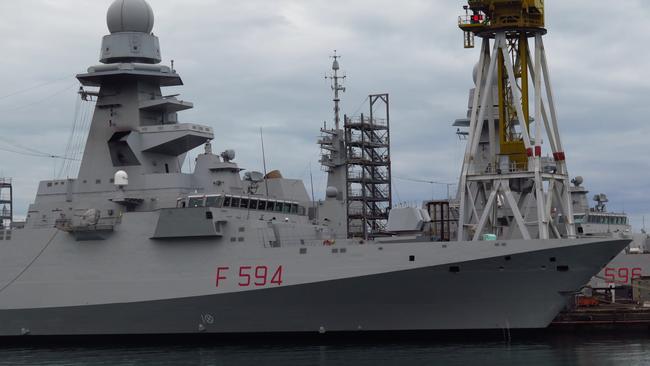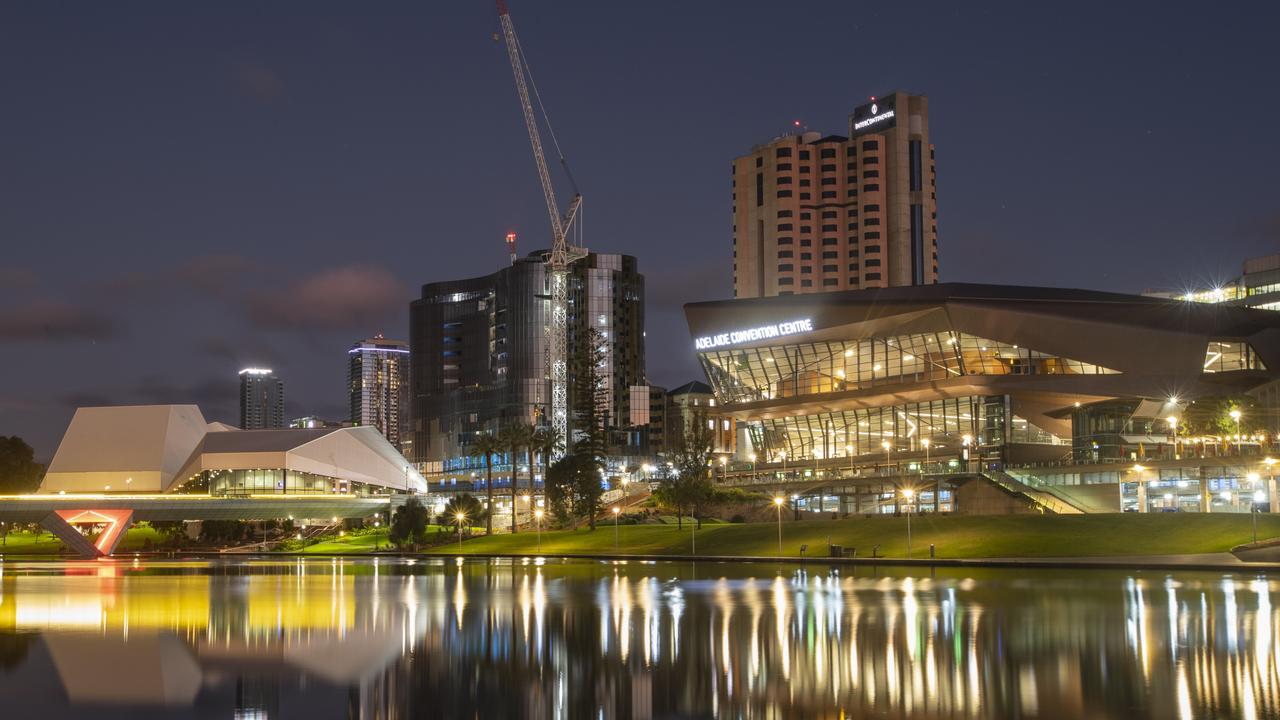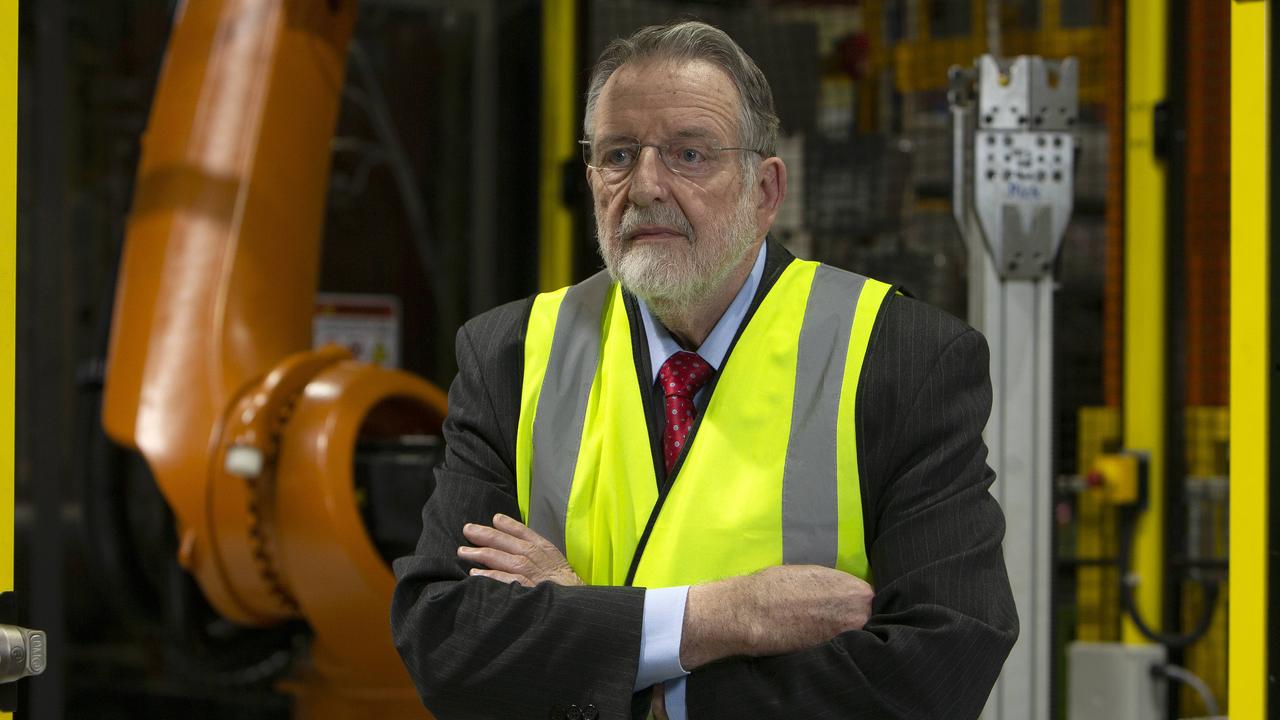Italian company Fincantieri says its track record makes it a safe pair of hands for $35B frigate build in Adelaide
ITALIAN shipbuilder Fincantieri believes it is a safe pair of hands to build Australia’s next generation of frigates and then expand into other shipbuilding activities — because it has done it all before.

SA Business
Don't miss out on the headlines from SA Business. Followed categories will be added to My News.
ITALIAN shipbuilder Fincantieri believes it is a safe pair of hands to build Australia’s next generation of frigates and then expand into other shipbuilding activities — because it has done it all before.
On a tour of the company’s Italian shipyards recently, Jennifer Granholm, a former governor of Michigan and a board member of Fincantieri’s US arm, said the company employed about 2100 people directly and 500 contractors, with many of those making the transition from the state’s automotive sector.
Fincantieri acquired a Wisconsin shipbuilding company in 2009 while it was in the process of bidding to build the US navy’s Freedom-class littoral combat ships (LCS).
The company won that bid and across its three US shipyards now has delivered five LCS, with three in the testing phase, four under construction. And it has won other commercial and government contracts including building 13.7m response boats for the US coast guard. The company said it had invested $140 million across the three shipyards.
Fincantieri Marine Group president and chief executive Francesco Valente said since the 2009 acquisition the shipyards have “grown into one of the main centres of shipbuilding in the United States’’.
“We build ships both for the US navy which is our main contract ... but we also do construction for commercial operators in the oil and gas business and for other government entities and we are also a big repair and conversion operation,” he said.
“We have grown employment significantly in the area and beyond, and built a significant supply chain.’’
Ms Granholm said following the global financial crisis, Michigan — which was the backbone of the US manufacturing sector — was struggling with the fallout from the crash in the automotive sector.
“In 2009 we were the state that had the highest unemployment rate in the country as a result of the great recession,” she said.
“When the auto industry went bankrupt, famously, all of the suppliers had already gone bankrupt leading up to that.’’
Ms Granholm said a search began to do anything to bring jobs to Michigan.
“I was particularly focused on foreign direct investment as a way of helping to diversify our economy but build on our strengths which of course was manufacturing and advanced manufacturing.’’
Michigan courted Fincantieri and offered incentives such as tax breaks and training for the company to set up in the US.
Ms Granholm said the Michigan government did not want Fincantieri to simply import Italian workers, however, but wanted it to upskill local workers and build a local industry.
She said the result to date had been “over and above our wildest dreams’’.
“The amount of money that’s been infused into the local economy (in terms of salaries) as well as to local suppliers has just lifted these areas,’’ she said.
Unemployment in the Great Lakes areas of Michigan had fallen from about 14 per cent to 4 per cent over the period.
“This is the largest employer in the area,’’ she said.
“This employer has saved both northern Michigan and northern Wisconsin.’
“The bottom line was this was one of the best things I did as governor ... a huge success, a huge lift for this region.
“Fincantieri ... was so utterly respectful of our desire to build an American shipyard with American employees.’’
Part of this process has involved integration into local education providers, including internships at local high schools and colleges.
Ms Granholm said while auto workers had to be retrained, their backgrounds in manufacturing and lean processes meant the transition was a smooth one.
Fincantieri is one of three global defence companies, including British company BAE Systems and Spanish company Navantia, which are bidding for the SEA 5000 Future Frigates contract, which the Federal Government is expected to award by mid-year.
The program to build nine frigates is part of the overall $89 billion national shipbuilding program, which includes the Future Submarines program, which will start in Adelaide in the mid 2020s and the offshore patrol vessel build.
The first two OPVs will be built in Adelaide starting this year before that program moves to Western Australia.
The Italian bidder for the $35 billion program says it has a “precise industry plan” that would make Australia capable of designing and exporting its own ships, above and beyond the military shipbuilding program.
Fincantieri has also revealed in briefings in Italy it expects to announce a winning bidder, or bidders, to build three cruise ship “blocks” in South Australia around the end of this month.
Fincantieri last week launched the eighth of 10 FREMM frigates it is building for the Italian navy.
The author travelled to Italy as a guest of Fincantieri


